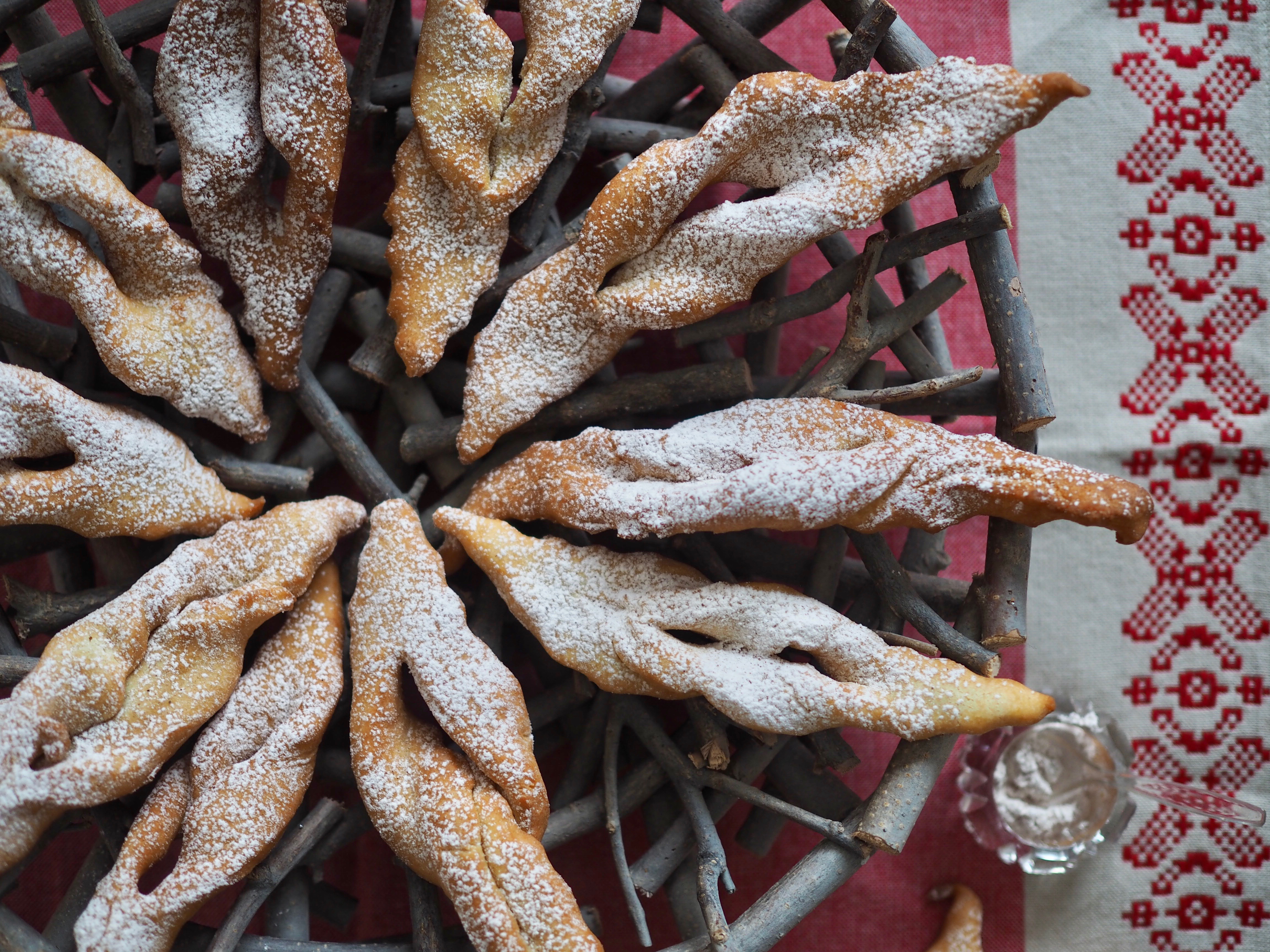 The farm has become a blanket of white, with only the contrast of branches and jetting rock to add depth and structure. It’s tranquil and all encompassing.
The farm has become a blanket of white, with only the contrast of branches and jetting rock to add depth and structure. It’s tranquil and all encompassing.
With the holidays fast approaching and the weather conveniently allowing for more time indoors, baking is on the mind. For centuries, people have gathered around the oven, the stove, the griddle, and the fire to produce baked goods befitting of a celebration. It’s a social event from the moment the ingredients are combined all the way to the last bite.


 Fattigmann is a beloved Norwegian cookie served during Christmas. It most likely entered the Norwegian food culture around the late 1700s or early 1800s. Many cultures have their variety of this knot-shaped cookie, which are deep-fried. Italy has cenci fritti, France has merveilles, Sweden has klenater, Denmark has klejner, Iceland has kleina and the Faroe Islands have kleynur.
Fattigmann is a beloved Norwegian cookie served during Christmas. It most likely entered the Norwegian food culture around the late 1700s or early 1800s. Many cultures have their variety of this knot-shaped cookie, which are deep-fried. Italy has cenci fritti, France has merveilles, Sweden has klenater, Denmark has klejner, Iceland has kleina and the Faroe Islands have kleynur.
Its name (translated to ‘poor man’) is very misleading since its ingredients were both expensive and exclusive. Ingredients such as sugar, egg yolks, cream, and cognac were top commodities. These cookies were not an everyday occurrence for people with more ‘moths than money’ in their pockets. The name seems purely satirical, yet it is possible that the name could have derived from the Swedish term klenät. It then could have been translated to mean poor man or poor thing because in Eastern Norway, the word klen has this meaning. (Ganens Makt, Notaker)

 Fattigmann is relatively simple to make and quite an extravagant gesture. The dough is gently deep-fried until lightly brown and sprinkled with a generous dose of cinnamon powdered sugar. These are guaranteed not to last long. And don’t worry about not getting the shape right, they are quite forgiving when fried and I think it adds a more rustic and homemade charm when they vary a bit.
Fattigmann is relatively simple to make and quite an extravagant gesture. The dough is gently deep-fried until lightly brown and sprinkled with a generous dose of cinnamon powdered sugar. These are guaranteed not to last long. And don’t worry about not getting the shape right, they are quite forgiving when fried and I think it adds a more rustic and homemade charm when they vary a bit.
Fattigmann (Poor Man Cookies)
(Makes around 30 fattigmann)
Ingredients:
- 6 egg yolks
- 6 tablespoons (72 g) sugar
- ½ cup (120 ml) heavy cream
- 2 tablespoons cognac or brandy (I used a good quality whiskey as that’s what I had on hand and it worked great)
- 2 ½ cups (300 g) flour, approximately
- 1 teaspoon ground cardamom
- 16 ounces (500 g) lard or vegetable oil
- Cinnamon and powdered sugar for sprinkling
*You will need to prepare the dough a day in advance, so it can rest in the refrigerator overnight. At a minimum, make the dough at least a couple of hours ahead of time.
Whisk the egg yolks and sugar together until light and fluffy and add in the cognac.
Whip the heavy cream until firm and fold it into the egg mixture.
Add the flour and cardamom and blend well. Sprinkle a little flour over the dough, cover and place in the refrigerator overnight.
When ready to cook, heat the lard or vegetable oil in a large saucepan.
Roll out the dough very thinly on a lightly-floured surface. Using a pastry wheel (or a dull knife), cut the dough into diamond shapes and place a small slit in the middle of each diamond. Lifting one up at a time, pull one end of the diamond through the slit to make a knot-shape.
Check to see if the lard or vegetable oil is hot enough (it will begin to bubble when a drop of dough is placed inside). Place the fattigmann, a few at a time, in the hot lard/oil and cook until golden brown, turning once. Remove and drain on paper towels.
Sprinkle the fattigmann with a mixture of powered sugar and cinnamon (3:1 ratio, or to your liking).
Store in airtight containers or place in the freezer.
♦ More Holiday Baked Goods:
Krumkaker with Juniper Cream and Espresso Cream
Lefse from Mollas Bakeri
Lefse (Kling) from Uvdalsleiven Tradisjonsbakst

Leave a Reply